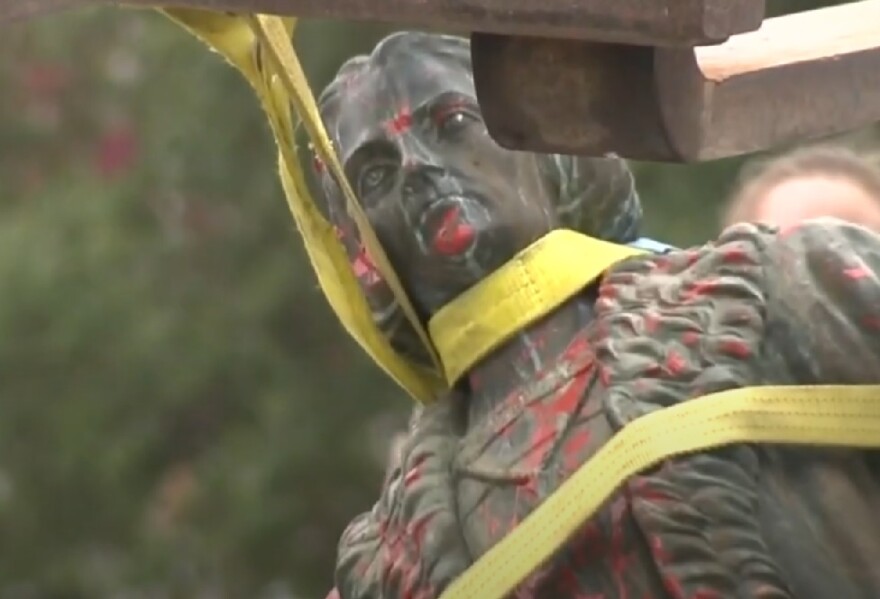In July 2020, the city of San Antonio removed its Christopher Columbus statue. It stood for years in downtown’s Columbus Park, but that area was also later renamed Piazza Italia Park.
The action followed protests and vandalism, red paint had been thrown on the effigy, and the city announced it would begin the process of either restoring or permanently relocating it.
The City Council later voted unanimously to keep the statue down, return it to the Christopher Columbus Italian Society, which originally donated it in 1957.
The removal of San Antonio’s Christopher Columbus statue was part of a nationwide movement to reconsider monuments honoring controversial historical figures. Cities across the U.S., from Boston to Minneapolis, took down Columbus statues amid protests linking him to colonial violence and the oppression of Indigenous peoples.
In San Antonio, activists argued the statue represented conquest, not discovery.
Historian Matthew Restall’s “The Nine Lives of Christopher Columbus” dismantles the centuries of mythmaking that have obscured the real man behind the legend.
Through a blend of biography and cultural analysis, Restall argues that the Columbus at the center of modern controversy is not one man, but many, each constructed by different generations to serve shifting political, cultural, and symbolic needs.
Restall portrays Columbus as a flawed, ambitious Genoese sailor driven by dreams of social advancement rather than scientific discovery.
“He wasn’t a monster, but not particularly likable either,” Restall says.
The explorer’s obsessive belief that he was fulfilling divine prophecy, combined with poor administrative skills, led to disaster in the Caribbean. Though he achieved his goal of founding a noble dynasty, his title “Admiral of the Ocean Sea” still exists in Spain, he failed as a colonial governor and diplomat.
But Restall’s book is less about the man himself than about the stories of Columbus that were spun since his death. He introduces the idea of “myth history,” where the past is continually reinvented to reflect current values.
In this framework, there are multiple “lives” of Columbus: the ambitious sailor, the American symbol of discovery, the Italian-American hero, the daring entrepreneur, and the symbol of Indigenous suffering. Each has taken turns dominating public imagination.
Nowhere is this clash more visible than in the annual debate over Columbus Day versus Indigenous People’s Day. For many Italian-Americans, Columbus represents pride and heritage. For others, he embodies the beginning of colonization, slavery, and genocide.
“The Columbus that Columbus Day people are often defending is the Italian American Columbus,” Restall notes. “That Columbus has nothing to do with Indigenous peoples.”
Guest:
Matthew Restall is a prominent historian, ethnohistorian, and author, especially known for his work in colonial Latin American history.
"The Source" is a live call-in program airing Mondays through Thursdays from 12-1 p.m. Leave a message before the program at (210) 615-8982. During the live show, call 833-877-8255, email thesource@tpr.org.
This interview will be recorded live Thursday, October 9, 2025.



